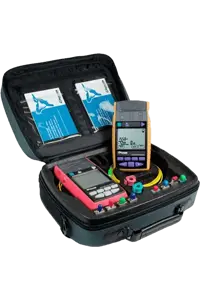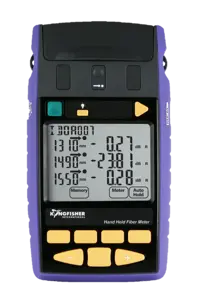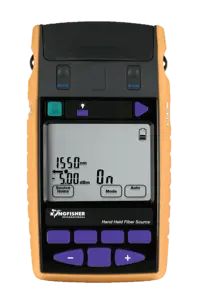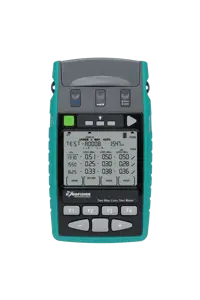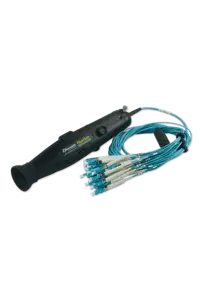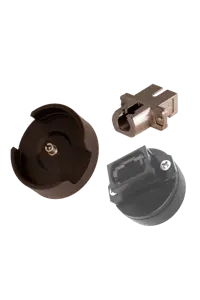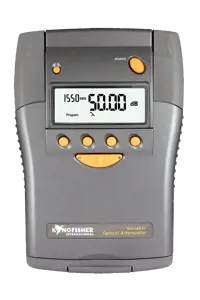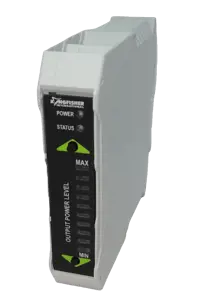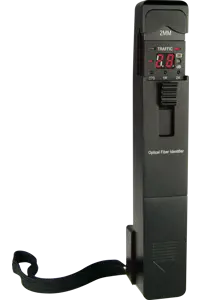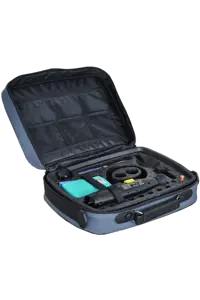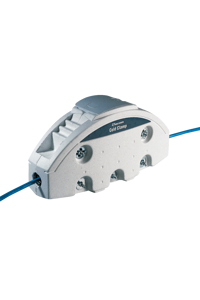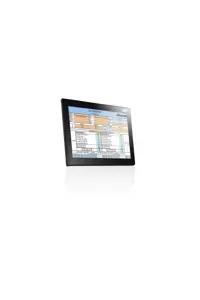Note: this application note is out of date, and is hidden but still accessible.
Introduction
This note aims to give a concise list of limiting factors for commonly deployed optical communication systems. It gives a concise overview of the application of transmission systems from the most basic through to experimental.
Multimode systems
These communications systems are characterized by being lower cost (although the optical fiber cost is higher than single mode fiber), and used for transmission distances of up to a couple of Km for moderate to high data rates. There is currently a lot of change occurring in this area.
Emitters:
LED: Low cost surface emitting Light Emitting Diode at 850 or 1310 nm. There is little ongoing development of this application area, except in alternative applications such as automotive.
- Inexpensive. Used in systems up to 270 Mbit and with 62.5u core fibers.
- Low output power, typically -23 to -14 dBm, resulting in limited range.
- Poor linearity and broad spectral output, typically 100 nm, resulting in significant chromatic dispersion.
- Low speed, it is unusual to use LEDs at speeds much faster than 100 Mbit.
VCSEL: Low cost Vertical Cavity Surface Emitting Laser at 850 nm. There is a lot of ongoing development of this technology, and it is likely to be used extensively in 10 Gigabit Ethernet systems.
- Inexpensive. Used in systems of 1 Gigabit and upwards with 50 u core fibers.
- High output power, typically -10 to 0 dBm. However to reduce reflection sensitivity, some laser units are deliberately designed with a low output power and poor coupling efficiency.
- Narrow spectral output (typically 0.1 - 5 nm), and good linearity. These systems are usually limited by pulse dispersion.
- High speed. 1 Gigabit devices are in over-supply, devices for 10 Gigabit transmission are becoming commercially available.
- OM3 grade 50u core multimode fibers are now available for these lasers, which can transmit 10 Gigabits at 850 nm and 300 meters distance.
Detectors:
The detector used is typically Si at 850 nm, or InGaAs at 1310 nm. The detector and its amplifier are typically optimized for a particular application in terms of cost, data rate and sensitivity. The sensitivity is typically controlled by the performance of the electronic amplifiers, so the detector itself is rarely a fundamental limitation.
Fibers
There are many available grades of 62.5u and 50 u multimode graded index fibers . The grade is largely determined by the bandwidth characteristics. There are a few other types in occasional use:
- 100 micron core with 140 micron glass diameter. This was commonly used with SMA style connectors in low bit of rate applications. It is now rarely used.
- 1mm diameter plastic step index fibers, which can be used for very low data rates up to about 50 metres with red LEDs at 660 nm.
- There is on going development of smaller core graded index plastic multimode fibers. This is optimized for 850 nm application, and can transmit high speeds up to about 100M. It could potentially be used for future LAN applications.
- Plastic clad silica (PCS), with a > 200 micron core diameter, commonly used at 850 nm.
General performance limitations of multimode systems.
The following discussion of general performance limitations refers to 50 or 62.5 micron fibers at 850 and 1310nm.
LED transmission systems up to 10 Mbit.
These systems are limited by attenuation. As long as enough light couples from the transmitter to the receiver, the system should work without qualification. The receiver will have a wide dynamic range of reliable operation, and will typically work with the transmitter connected directly into the receiver.
Review: things to know
- Coupled LED power.
- Receiver upper and lower power limits.
- Attenuation of link at LED wavelength.
- Bit error rate requirement.
LED transmission systems up to 100 Mbit/s:
These systems are limited by a combination of factors. The receiver is less sensitive due to the higher data rate, and may saturate if the transmitter is connected directly. The distance is typically limited by a combination of modal dispersion characteristics, and the LED spectral width. The narrower the spectral width, the closer the LED wavelength to 1310 nm, and the larger the cabling bandwidth rating, the further you can transmit. The 100 Mbit/s FDDI standard has a 2 Km distance limit imposed as a result of this factor, based on typical components. The FDDI standard incorporates these limitations into the component specifications, so items which are "FDDI compatible" should work together.
Review: things to know
- Coupled LED power.
- Receiver upper and lower power limits.
- Attenuation of link at LED wavelength.
- LED spectral width and centre wavelength tolerance.
- Cable Bandwidth rating.
- Bit error rate requirement.
Laser data systems up to 1 Gigabit:
This is technically quite simple if it is done with 850 nm VCSEL / OM3 50 micron cables. However in a lot of cases people are upgrading legacy systems, which causes complications. These systems are currently used in high performance backbone LAN segments, however they may spread across the network in due course. Performance is limited by multimode pulse dispersion. There is usually a small power budget, maybe as low as 2.5 dB.
Review: things to know
- The power budget ( may be tiny!)
- Pulse dispersion effects (if not using OM3)
- Bandwidth rating (if not using OM3).
- Back reflection requirements.
- Bit error rate requirement.
Laser data systems up to 10 Gigabit:
This is just past the standards agreement stage, with a very small number of expensive commercial products now available. Technically not very different to 1 Gigabit systems. It will almost certainly be done with 850 nm VCSEL / OM3 50 micron cables. Performance is limited by multimode pulse dispersion. There is usually a small power budget, maybe as low as 2.5 dB
Review: things to know
- The power budget (may be tiny!)
- Pulse dispersion effects
- Bandwidth rating.
- Back reflection requirements.
- Bit error rate requirement.
Analogue:
On multimode systems is quite limited in it’s technical performance. LEDs are not very linear at best, resulting in distortion of an analog signal. Modal transmission noise results in poor signal / noise effects. Modal noise also prevents use of ( more linear ) lasers, since the resulting coherent light is highly susceptible to modal noise. High levels of reflections in multimode connectors create further line distortions. Use of some sort of carrier technique ( eg FM or AM ) tends to result in improved performance. The most complex analog signal commonly transmitted on multimode is from video security cameras, where high transmission quality is not required.
Review: things to know
- Coupled LED power.
- Receiver upper and lower power limits.
- Attenuation of link at LED wavelength.
- LED spectral width and centre wavelength tolerance ( depending on signal bandwidth).
- Bandwidth rating (depending on signal bandwidth).
- Link specifications on distortion & noise level.
Single mode systems
Performance
These are characterized by being higher performance systems, offering theoretical bandwidths in excess of 100 THz, or distances of hundreds of Km.
The longest ever all-optical amplified data link made is about 20,000 Km, and the highest data rates of 10 Tbit/s have been achieved by WDM. 10 Tbit/s is the equivalent of around 150 million phone calls ( 64 Kbit / channel), or 2.5 million compressed video signals ( 4 Mbit / channel ).
At the time of writing, typical commercial systems are capable of 10 Gbit with 50 Km between repeaters. Distances can be increased by use of optical amplifiers, and the data rate increased with the use of dense wavelength division multiplexing.
The growth of DWDM systems is much slower than originally forecast, since general capacity requirements have grown more slowly than was predicted, and these systems increase cost and complexity. An entire new control layer is required, eg the 'optical transport layer', or 'optical internet', increasing maintenance difficulty. DWDM channel spacing is dropping from 0.8 nm (100GHz) towards 0.2 nm (25 GHz). The current DWDM channel capacity is about 150, which gives a total capacity of about 5 Tbaud. There is some deployment of systems with this sort of capability.
The requirements of WDM have required major developments of lasers and passive devices able to provide the required features. Many of these use Bragg gratings, which can be readily customized and written into a glass core using a mask and laser (sounds like semiconductor lithography all over again!).
Recently, the industry has adopted a new coarse wavelength division multiplexing (CWDM) standard, which is much lower cost. This system multiplexes up to 18 channels at 20 nm spacing.
The emitter used is typically:
- A Fabry-Perot laser, which couples -10 to +5 dBm. This is the standard low-end emitter for single mode work at 1310 and 1550 nm. The Fabry-Perot laser has a spectral width of typically 3 nm, which due to wavelength dispersion effects, limits its use to typically under 1 Gbit/s. These tend to also be split into low power types ( eg -10 dBm ) without lens coupling, and lensed types ( eg 0 dBm ). At higher data rates, reflected light is kept below about -25 dB for good performance. These lasers also tend to suffer wavelength instability, or chirp, during the first nsec or so of modulation.
- A distributed feedback ( DFB ) laser with a line width of typically 0.1 nm, used for very high data rates where laser line width or linearity is critical. These lasers are very sensitive to instability caused by reflected light, and so require very low levels of reflected light to provide good performance ( typically -50 dB or better ). These are used for both DWDM and CWDM applications.
- As above, but with a heater / cooler to achieve constant temperature so as to provide one or more improved parameters over the specified range of ambient temperature: reliability, operating temperature range, linearity & distortion, wavelength tolerance, line width, power stability.
- As above, but with a built in isolator and / or modulator. This is a high-end device used for high data rates over long distances. The advantage of using a modulator, is that the laser remains stable and hence the emitted spectrum is narrower and more stable.
- As above, but specially selected and tested for analogue use.
- As above, but with a built in bragg grating to provide a precise operating wavelength, accurate to within 1 nm over all conditions.
The detector used is typically:
- An InGaAs PIN (positive-intrinsic-negative, refers to the semiconductor device structure) diode.
- A PINFET is a PIN detector fabricated directly onto the gate of a MOSFET transistor, which gives the lowest possible electrical capacitance and hence best possible speed and sensitivity. These are usually back-illuminated by the fiber end, which therefore has to be mated to the chip. This mechanical complexity increases cost.
- An InGaAs or Ge avalanche diode ( which may be damaged by direct connection to a transmitter ).
- The detector and its amplifier are typically optimized for a particular application in terms of cost, data rate and sensitivity. The sensitivity is typically controlled by the performance of the electronic amplifiers, so the detector itself is rarely a fundamental limitation.
The fiber used is typically
- single mode step-index type with a light spot diameter of 9.5 or 10 micron, and a glass outer diameter of 125 micron. May be optimized for minimum wavelength dispersion at 1310 or 1550 nm. There are variants such as LEAF (Large Effective Area Fiber), which have specialized properties for ultra long distance uses.
- Smaller core diameters. For wavelengths below the cutoff wavelength, transmission will be multimode. For 9.5 u cores, this occurs at about 1200 nm, so to transmit say 850 nm as a single mode light ray, a smaller core diameter is required, eg 4 micron.
- Polarization preserving fibers are used in various applications involving linking devices such as external modulators, solid state switches, isolators etc. They preserve and control the polarization of the light ray, which is essential to control the interference between light beams in a coherent system. The most common type is PANDA.
- Rare earth fibers. These are used in amplifiers, currently Erbium for amplification at 1550 nm, and praseodymium at 1300 nm.
- Reverse dispersion fibers. These may be used in short lengths to compensate for dispersion.
General performance limitations of single mode systems
The following discussion of general performance limitations refers to 9.5 micron core fibers at 1310 and 1550 nm:
Data up to 100 Mbit/s:
These systems are limited only by attenuation. As long as enough light couples from the transmitter to the receiver, the system should work. The receiver will have a wide dynamic range of reliable operation. The receiver may saturate if the transmitter is connected directly. A modest performance Fabry-Perot laser is appropriate.
Review: things to know
Transmitter power.
Receiver upper and lower power limits.
Attenuation of link at transmitter wavelength.
Bit error rate requirement.
Data up to 560 Mbit/s:
These systems are usually limited by the same characteristics as a 100 Mbit/s system, however reflections play an important role, and need to be planned for, controlled and measured. Either type of detector diode may be used.
Review: things to know
Transmitter power.
Receiver upper and lower power limits.
Attenuation of link at transmitter wavelength.
Bit error rate requirement.
Transmitter optical refelction requirements.
Single wavelength data up to about 40 Gbit/s:
The laser will be a DFB type if the fiber zero dispersion wavelength is not closely matched to the laser wavelength. An external modulator and / or isolator may be used. Care must be taken to control reflections, and also control wavelength dispersion. A grating or other reverse dispersion compensator may be used for dispersion compensation. The receiver may have a small range of acceptable input power for proper operation, and may also be very sensitive to overload. This category could expand to 100 Gbit/s in a few years.
Review: things to know
Transmitter power.
Receiver upper and lower power limits.
Attenuation of link at transmitter wavelength.
Bit error rate requirement.
Transmitter return loss requirements.
Laser line width and operating frequency.
Bandwidth rating.
Polarization Mode dispersion
Data up to 10 Tbit/s:
Due to current speed limitations in electronics, this will be achieved in some part by dense WDM techniques. Individual channel capacity could be around 2.5 - 40 Gbit/s. The lasers are manufactured with an integrated Bragg grating to achieve wavelength accuracy and narrow line width, and are supplied at ITU compliant wavelengths. Channel decoding uses Bragg gratings to separate the channels onto the individual receivers.
Review: things to know (per channel)
Transmitter power.
Receiver upper and lower power limits.
Attenuation of link at transmitter wavelength.
Bit error rate requirement.
Transmitter reflection requirements.
Laser line width and operating frequency.
Bandwidth rating.
Things to know ( multiplexer ):Window templates and tolerances.
Polarization Mode distortion
Analogue:
Is best suited to singlemode systems. Lasers are quite linear ( particularly DFB lasers ), and special selection of lasers allows excellent characteristics. Low levels of transmission noise is achieved due to the single mode characteristic. Low receiver noise is achievable with high power levels. High quality transmission ( eg suitable for transmitting television to your house ) can be achieved, with 40 channels multiplexed through one link. Analogue is also used for antenna remoting for mobile phone antennas at up to nearly 1 GHz, and for military radar. Isolators are commonly used to achieve peak performance.
Review: things to know
Transmitter power.
Receiver upper and lower power limits.
Attenuation of link at transmitter wavelength.
Transmitter, connector and link ORL requirements.
Laser linewidth and operating frequency.
Bandwidth rating.
Link specifications on distortion & noise level.


